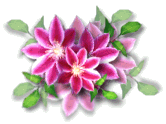|
ALOE
(Greek: aloe) Aloe succotrina The aloe plant is native to the island of Socotra in the Indian Ocean near the entrance of the Gulf of Aden.
~Proverbs 7:17~
~Psalms 45:8~
~Numbers 24:6~
~John 19:39~

ALOE
(Hebrew: ahalim) Aquilaria agallocha Eaglewood or aloe is referred to in the Old Testament and is native to tropical Asia. Agallochum is the heartwood of the tree. Found in northern India, the tree grows as tall one hundred twenty feet. In the East its beautifully grained wood was finished with polish which added to its beauty. In the ancient world aloe wood was worth its weight in gold. A popular belief was that this was the only tree descended to mankind from the garden of Eden. Legend says that Adam carried one of its shoots from the garden, transplanted it where he settled and every aloe tree has come from this shoot. Shoot of Paradise or Paradise Wood are other names given this tree.
~Numbers 24:6~
(KJV) As the valleys are they spread forth, as gardens by the river's side, as the trees of lign aloes which the LORD hath planted, and as cedar trees beside the waters.

ALMOND BLOSSOMS
~Exodus 25:33,34~
And thou shalt make a candlestick of pure gold: of beaten work shall the candlestick be made, even its base, and its shaft; its cups, its knops, and its flowers, shall beof one piece with it." and "three cups made like almond-blossoms in one branch, a knop and a flower; and three cups made like almond-blossoms in the other branch, a knop and a flower: so for the six branches going out of the candlestick:"
~Exodus 37:19,20~

ANEMONE
The anemone (A coronaria), has the greatest probability of being regarded as the "lily of the field" to which our Lord refers. Says Tristram (Nat.Hist.of the Bible), "...if, in the wondrous richness of bloom which characterizes the land of Israel in spring, any one plant can claim pre-eminence, it is the anemone, the most natural flower for our Lord to pluck and seize upon as an illustration, whether walking in the fields or sitting on the hill-side." Anemone is originally derived from the Greek word ánemos, meaning wind. In Palestine the anemone was thought to have grown under the cross of Jesus.

ANISE
(Greek: anethon) Anethum graveolens
~Matthew 23:23~ (KJV)
Woe unto you, scribes and Pharisees, hypocrites! for ye pay tithe of mint and anise and cummin, and have omitted the weightier matters of the law, judgment, mercy, and faith: these ought ye to have done, and not to leave the other undone.

ARTEMESIA
Also known as Wormwood which is a bitter plant
~Revelations 8:11~
~Deuteronomy 29:18~
~Proverbs 5:4~
~Jeremiah 9:15; 23:15~
~Lament3:19~

BALM
(Hebrew: tsori) Commiphora opobalsamum Balm is the thickened gum from the juice of the balsam tree, which was abundant in Judea. It is native to southern Arabia and Abyssinia, was cultivated on the plains of Jericho and the Jews believed it was planted by King Solomon. According to history the Queen of Sheba brought balm to Solomon on the occasion of her visit. Balm was rare and costly when exhibited in Rome for all people to see. After the conquest of Judah, it was brought by Pompey for display. When Vespasian destroyed Jerusalem, balm was among his spoils. Balm was the emblem of Palestine and newly cultivated shrubs were protected by sentries.
~I Kings 10:10~
And she gave the king... of spices of very great store, and precious stones: there came no more such abundance of spices as these which the queen of Sheba gave to king Solomon.
~Ezekiel 27:17~
~Jeremiah 8:22; 46:11; 51:8~
~Genesis 37:25; 43:11~

BARLEY
(Hebrew: seorah) (Greek: krithe) Hordeum distichon
Bread made from barley was a staple of the Hebrew diet. The Hebrew word seorah means "long hair". The awns of the plant are very long and look like hair. Barley has been found in Egyptian tombs in Thebes and also in stone age dwellings. Workers engaged in construction of Solomon's temple were paid twenty thousand measures of barley as their food ration. Barley bread was used by the poorer people. It was the first crop ready for the harvest by the time of the Passover, in the middle of April
~John 6:8-13~
There is a lad here, who hath five barley loaves, and two fishes: but what are these among so many?
~Exodus 9:31~
~Deuteronomy 8:8~
~Leviticus 27:16~
~Jeremiah 41:8~
~1Kings 4:28~
~2Kings 7:1~
~Judges 7:13~
~Ruth 1:22~
~Numbers 5:15~
~Revelation 6:6~
~2Samuel 14:30; 21:9~
~Hosea 3:2~
~1Chronicles 11:13~
~2Chronicles 2:10; 27:5~

BITTER HERBS - DANDELION, ENDIVE, CHICORY, LETTUCE & SORREL
(Hebrew: merorim ) Taraxacum officinale The bitter herbs were gathered fresh and eaten as a salad.
~Numbers 9:11~
(KJV) The fourteenth day of the second month at even they shall keep it, and eat it with unleavened bread and bitter herbs.

BLUE SALVIA
Also known as sage. Salvia officinalis The name sage comes from the Latin word salvere or salvation meaning 'to be in good health, to cure, to save.' Sage was a sacred ceremonial herb of the Romans. It was associated with immortality and was thought to increase mental capacity in ancient times.

BULRUSH
(Hebrew: gome) Cyperus papyrus
This word is the translation of the Hebrew gome, which designates the plant as absorbing moisture.
A common plant, the bulrush completely covered the Nile River in places. It is a beautiful plant having a strong root that keeps it from being swept away by river waters. This was the Egyptian papyrus (papyrus Nilotica). It was abundant in Egypt and was used for the construction of the ark of Moses. The root portions of the stem were used for food. It is no longer found in Egypt, but grows in Palestine, in the marshes of the Huleh, and in the swamps at the north end of the Lake of Gennesaret. Papyrus provided the earliest known material for making paper. Arabs called it babeer. The root is burned for fuel. Writing paper for the Egyptians was made by using the pith of the stems, laid flat and glued together. Then the whole mass was pressed under heavy weights and when dry it was ready to be written on. The first paint brushes were fashioned by fraying the ends of the bulrush stalks.
~Exodus 2:3~
(KJV) And when she could not longer hide him, she took for him an ark of bulrushes, and daubed it with slime and with pitch, and put the child therein; and she laid it in the flags by the river's brink.

CAMPHIRE
(Hebrew: copher) Lawsonia inermis It is referred to as the cypress flower and is the al-henna of the Arabs. It was valuable for its rich dye, especially by the women of Egypt who used it to stain their palms and the soles of their feet. Camphire has been traded for centuries.It is found only at Engedi, on the shore of the Dead Sea. It is known to botanists by the name Lawsonia alba or inermis, a kind of privet, which grows 6 or 8 feet high.
~Song of Songs 1:14~
(KJV) My beloved is unto me as a cluster of camphire in the vineyards of Engedi.
~Song of Songs 4:13~

CASSIA
(Hebrew: kiddah) Cinnamomum cassia The Hebrew name kiddah, means a bark that peels off. It is a fragrant tree resembling the cinnamon, but is less delicate in taste and perfume. The bark is thicker and more coarse, less expensive and is frequently mixed with other spices. Buds of the tree are used as a replacement for cloves.One of the principal spices of the holy anointing oil.
~Ezekiel 27:19~
Dan also and Javan going to and fro occupied in thy fairs: bright iron, cassia, and calamus, were in thy market.
~Exodus 30:13~
~Psalms 45:8~

CEDAR
This tree was the symbol of strength, majesty and beauty to the Hebrews. The cedar is often figuratively alluded to in the sacred Scriptures. "The mighty conquerors of olden days, the despots of Assyria and the Pharaohs of Egypt, the proud and idolatrous monarchs of Judah, the Hebrew commonwealth itself, the war-like
Ammonites of patriarchal times, and the moral majesty of the
Messianic age, are all compared to the towering cedar, in its
royal loftiness and supremacy
~Leviticus 14:4~
Then shall the priest command to take for him that is to be cleansed two birds alive [and] clean, and cedar wood, and scarlet, and hyssop:
~Numbers 19:6; 24:6~
~Ezekiel 27:5; 31:3; 17:3,22,23; 31:3-9~
~Cant 4:11~
~Hosea 14:6~
~1Kings 6:9; 10;7:21; 5:6,8,10,15,16,18,20; 7:2,3,7,11,12;9:11~
~Jer 22:14~
~Isaiah 44:14; 35:2; 60:13;2:13~
2 Sam 5:11; 7:2,7~
~Amos 2:9~
~Zech. 11:1,2~
~Job 40:17~
~Psalms 29:5; 80:10; 92:12~

CHESTNUT OR PLANE TREE
(Hebrew: armon) Platanus orientalis The tree termed as "chesnut" is identified as the "plane tree," It has a very tall trunk with smooth bark and branches that spread in all directions. This tree is found in great numbers in the plains of Assyria and in the Holy Land, along the edges of streams and rivers. It is planted for its shade along the Mediterranean coastline; under its branches Socrates held his audiences. Avenues of planes were planted in Athens and other Greek cities. The Hebrew name armon means "naked" or "peeling off," referring to the peeling of the bark each year. Pliny refers to the tremendous size of the chesnut. One plane tree near Istanbul is estimated to be over two thousand years old.
~Genesis 30:37~
(KJV) And Jacob took him rods of green poplar, and of the hazel and chestnut tree; and pilled white streaks in them, and made the white appear which was in the rods.
~Ezekiel 31:8~
~Exod 25:33~
~Job 15:33~

CINNAMON
(Hebrew: kinnamon) Cinnamomum zeylanicum Native to Ceylon, the cinnamon belongs to the Laurel family, grows to 30 feet high and has stiff evergreen leaves. For centuries its source was kept a secret by Arabs who first marketed it. The tree yields a spice that has been in continuous use since the days of early Greece and Rome. The book of Revelation tells of the fall of Babylon and among its precious commodities is cinnamon.
~Exodus 30:23~
"Take thou also unto thee principle spices, of pure myrrh five hundred shekels, and of sweet cinnamon half so much... "
~Proverbs 7:17~
~Song of Songs 4:14~
~Revelation 18:13~

CORIANDER
(Hebrew: gad) Coriandrum sativum This herb is the manna that miraculously fed the Israelites during their 40 year journey through the desert. It grows wild in Egypt and Palestine and can be found in China. Common in the Holy land, the plant was used as early as 1550 B.C. for culinary and medicinal purposes. This is substantiated by records of the papyrus of Ebers and in the writings of Cato and Pliny.
~Exodus 16:31~
And the house of Israel called the name thereof Manna: and it was like coriander seed, white; and the taste of it was like wafers made with honey.
~Exodus 16:35~
~Numbers 11:6-9~

CROWN OF THORNS
This thorn plant is accepted as the shrub gathered by soldiers to weave into the crown they placed on Jesus' head.

CUMIN
(Hebrew: cammon) Cuminum cyminum It was first cultivated in Persia for the the seeds. It is similar in shape to the fennel and contains an aromatic oil. Kammon, a village near Acre, is named for the Hebrew word for this plant. It is the only genus of its species and found in Western Asia. This plant doesn't grow wild; but has been cultivated from earliest times. The fruit is valued for medicine.
~Matthew 23:23~
"Woe unto you, scribes and Pharisees, hypocrites! For ye pay tithe of mint... and cummin, and have omitted the weightier matters of the law, judgment, mercy and faith; these ought ye to have done..."
~Isaiah 28:25,27~

DILL
Anethum graveolens Dill is native to the Mediterranean area and southern Russia. The name dill comes from the Norse dilla meaning "to lull." It was once used to induce sleep. In American history, dill and fennel seed were known as "meetin' seed" because they were given to children to eat during long Sunday sermons. Known for culinary, decorative, and medicinal value, it is also used to make green dye. It was a treatment for skin wounds.
Dill or anise was tithed by the Pharisees as seen in the book of Matthew. Anise is wrongly translated by some experts. The Latinized Greek name anethum means dill. It resembles fennel and has yellow flowers and is a carminative and yields essential oil. In ancient days the plant was used in foods and it flavored essences. It was grown by ancient Greeks and Romans. The Talmud records that the stems, leaves and seeds were tithed. Dill is known to Arabs as shibith. Dill was rare in biblical days. A herb so valued in bibical times that Scribes and Pharisees donated it to the temple.
~Matthew 23:23~ Woe unto you, scribes and Pharisees, hypocrites! for ye pay tithe of mint and anise and cummin, and have omitted the weightier matters of the law, judgment, mercy, and faith: these ought ye to have done, and not to leave the other undone.

FITCHES
(Hebrew: ketsah) Nigella satvia Fitches are believed to be the seeds of fennel or the nutmeg flower. It bears a cerulean blue flower and belongs to the order of Ranunculacece, which grows wild in the Mediterranean
countries, and is cultivated in Egypt and Syria for its seed." It is rendered in margin of the Revised Version "black cummin." The seeds are used as a condiment.
~Isaiah 28:25,27~
25: When he hath made plain the face thereof, doth he not cast abroad the fitches, and scatter the cummin, and cast in the principal wheat and the appointed barley and rie in their place?

FRANKINCENSE
Frankincense, also called Olibanum has been used for religious rites for centuries. It is mentioned in the first 5 books often. It has been used to treat internal and external ailments. It is a gummy resin found in small thorny trees called Boswellia Thurifera, growing in Africa, Yemen, and the Red Sea Countries. The sap from the trees oozes out forming small white peas, which harden in the air and turns yellow. These are burned for the aroma. The oil of Frankincense is calming and soothing .
~Solomon 4:14~
Spikenard and saffron, Calamus and cinnamon, with all trees of frankincense; Myrrh and aloes, with all the chief spices.
~Exodus 30:34~
~Leviticus 2:1,2,15,16; 5:11;6:15; 24:7~
~Numbers 5:15~
~Revelation 18:11-13~
~Isaiah 43:23; 60:6; 66:3~
~Jeremiah 6:20~

GOURD
Gourd is thought by some to be the castor bean plant.
~Jonah 4:6~
And Jehovah God prepared a gourd, and made it to come up over Jonah, that it might be a shade over his head, to deliver him from his evil case. So Jonah was exceeding glad because of the gourd.
|














